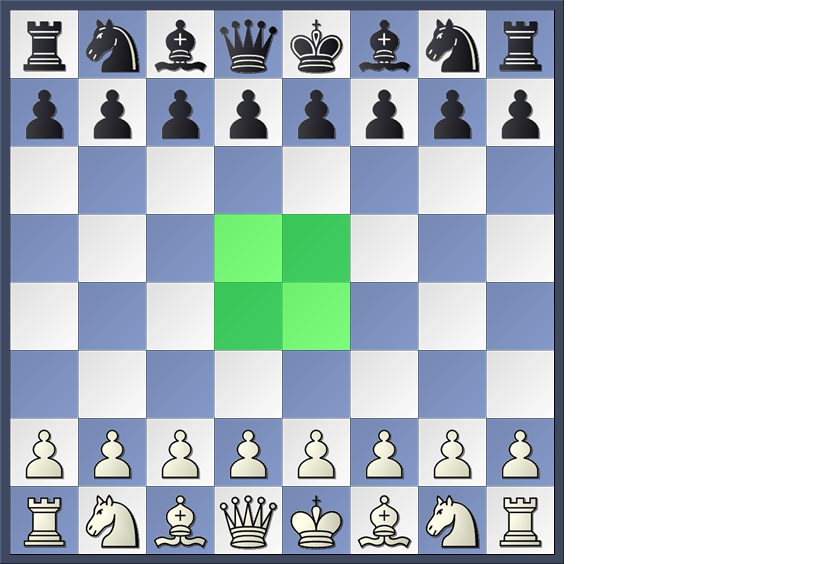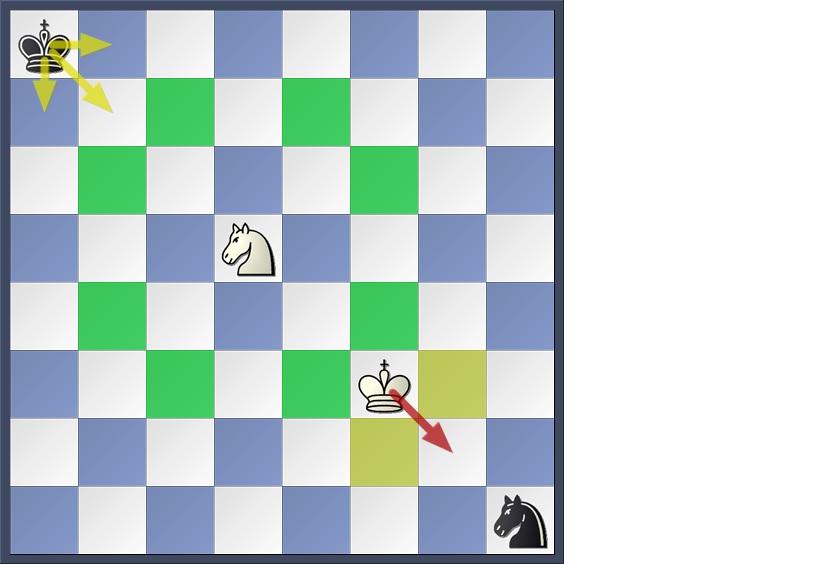Chess Strategy for Chess Openings and Chess Principles
What is chess strategy? The art of chess strategy is knowing how to formulate a plan for the chess game, and arrange your chess pieces to accomplish this plan. The chess strategy outlined below will get any new chess player on the road to understanding correct chess opening strategy - how to control the chess board from move one. Later you will discover many resources to aid in further improvement.
Introduction to Chess Strategy
Beginning chess players discover very quickly that learning how the pieces move is only the tip of the chess playing iceberg. It's usually after several moves of a typical chess game that the question arises, "What now?" Here we will discuss general chess principles in the chess opening.
This page will provide you with some very simple, easy guidelines in chess strategy for playing the chess opening. Aimed at beginners who know only the rules and moves, there is no talk about specific openings or strings of moves to memorize; only general chess strategy principles to think about when starting a chess game. Later you'll notice that on occasion (rarely) it's best to ignore a principle of chess strategy in the opening; nothing here is carved in granite. But for right now, these chess tips are excellent to follow during the first few moves of your game.
The underlying principle of chess strategy in the opening phase is control of the board's center squares. These are the four squares right in the middle of the chess board (shown here in green):

Every chess opening aims to occupy or control these central squares. Why? In chess geometry the center is important because each chess piece exercises maximum mobility in the center. Here's an example using only the Kings and a Knight for each side:

The centrally placed White Knight can move to eight (green) squares; it attacks and controls them. But the poor Black Knight in the corner only has two (yellow) squares, its mobility cut by 75% - plus the White King, attacking eight squares, can move in (red arrow) to capture the Knight. Notice that even the Black King has only three squares (yellow arrows) under control.
Center occupation and central control, getting the King castled to safety; these are the two principles of chess strategy behind all popular chess openings. Below are some typical chess opening moves, which illustrate the back-and-forth fight to dominate the center squares.
There is no need to take the game further - we see rapid development, a race to control the center squares and get the King to safety. Note that both players are also trying to prevent the opponent from achieving these strategic goals. It is also clear that no single pawn or piece can stand alone; the whole chess army needs to work as a unit to carry out our chess strategy. Remembering this will help you to understand the principles we're about to discuss.
1) Good chess strategy is to make your first move with the e-pawn or d-pawn advancing two squares. In either case, you will open pathways for the pieces to get off of the back rank and into the fight for the central squares.
2) Good chess strategy is playing each piece one time to its best square, developing them all in turn, and getting your chess pieces off the starting squares. You want to get your pieces into the game rapidly, and posted where they can accomplish something - either aiding your attack or defense of the center. Seldom will you move the same piece twice in the chess opening.
3) Good chess strategy is keeping your King safe, so castle early and get him behind your wing pawns. Castling is a great way to safeguard your King from sudden chess tactics and even checkmate - it gets the King away from the center and develops one of your Rooks at the same time. Top level chess strategy!
4) Good chess strategy is advancing only one or two pawns in the chess opening, just enough to stake out the center and develop your pieces quickly. Moving pawns can weaken your defenses, and is responsible for many losses in the chess opening. A pawn move can never be retracted!
5) Good chess strategy is to make a threat when developing the pieces, which will limit the opponent's freedom of choice. This is the "initiative", a chess strategy meant to dictate the game's course. Develop and threaten - good chess strategy!
If a beginner at chess will stay with these basic principles of chess strategy, success on the board is not far behind! See here for more ideas in the chess opening.
Check out this chess site for chess boards
Get Fritz 17 at ChessCentral.com





